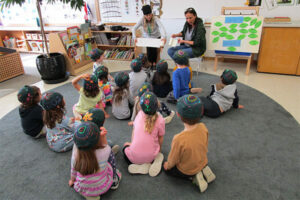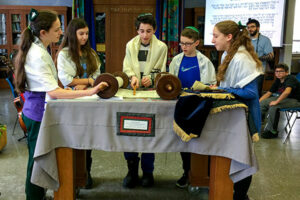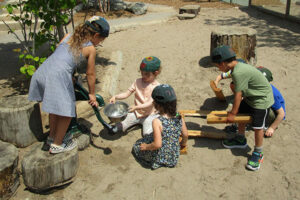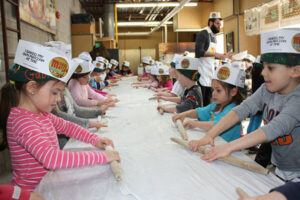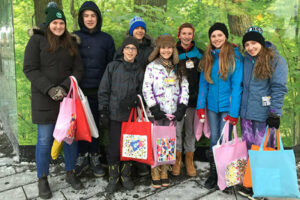“Through the Classroom Window” is an opportunity for teachers to share the inspiring learning that takes place in their classrooms, giving others a glimpse into the heartbeat of the school. Today, Grade 3 Judaics teacher, Orly Borovitch, shares how her students make rich connections, from Chumash to Chalutzim.
In Grade 3, students learn through a variety of generative topics or big ideas. These include Leshem Shalom (In the Name of Peace) and Emunah Meirah Tzedakkah V’Tzedakkah Mazriyah Emunah (Trust Inspires Fairness and Fairness Leads to Trust). Both of these notions underscore the importance of being part of a community and trying to live your life in a fair and just manner.
Students experience these ideas in a multitude of ways, across many disciplines. I teach these concepts through Jewish text in Chumash from Parshat Lech Lecha, when Hashem tells Avram to take his wife and belongings and leave their homeland; students establish that Avram has emunah (trust) in Hashem, as he does exactly as Hashem tells him to do, even though he was likely scared and anxious of the unknown.
In Ivrit, we begin the unit learning these big ideas by exploring the bravery and passion of the Jewish pioneers, known as the Chalutzim. Students complete their work in their Haggadat Hachalutzim, which helps reinforce language concepts learned. Both narratives speak of the Jewish people facing different threats and dealing with the push-and-pull factors leading to migration, as well as limited resources. They also show how the Chalutzim leaned into their emunah while also actively working hard toward their goals of freedom and developing the land of Israel.
As students learn each of these narratives, they eventually find many rich connections. For example, one student said that “the Chalutzim are going back to Israel because that’s what Hashem promised Avram like we learned in Chumash.”
In Language Arts class, students learn about the various factors that inspired this Jewish migration out of Europe and other places like Yemen. Students work in groups and receive a different scenario describing how life was challenging for the Jews; for instance, during the Russian pogroms of 1881. Students work to dramatize assigned texts and present their skits to the class.
In Science and Environmental Studies (SES), students think like scientists about the physical challenges the Chalutzim faced: poor soil composition, swampy land, and limited resources. Students conduct a variety of science experiments, including those that focus on the composition of earth and soil, and different soil types. Students then relate what they learn to Carpas, the part of the seder that celebrates the spring harvest and new beginnings.
For one experiment, students placed celery in cups of water, and learned how plants were used in Israel to drain the brackish (unhealthy) land.
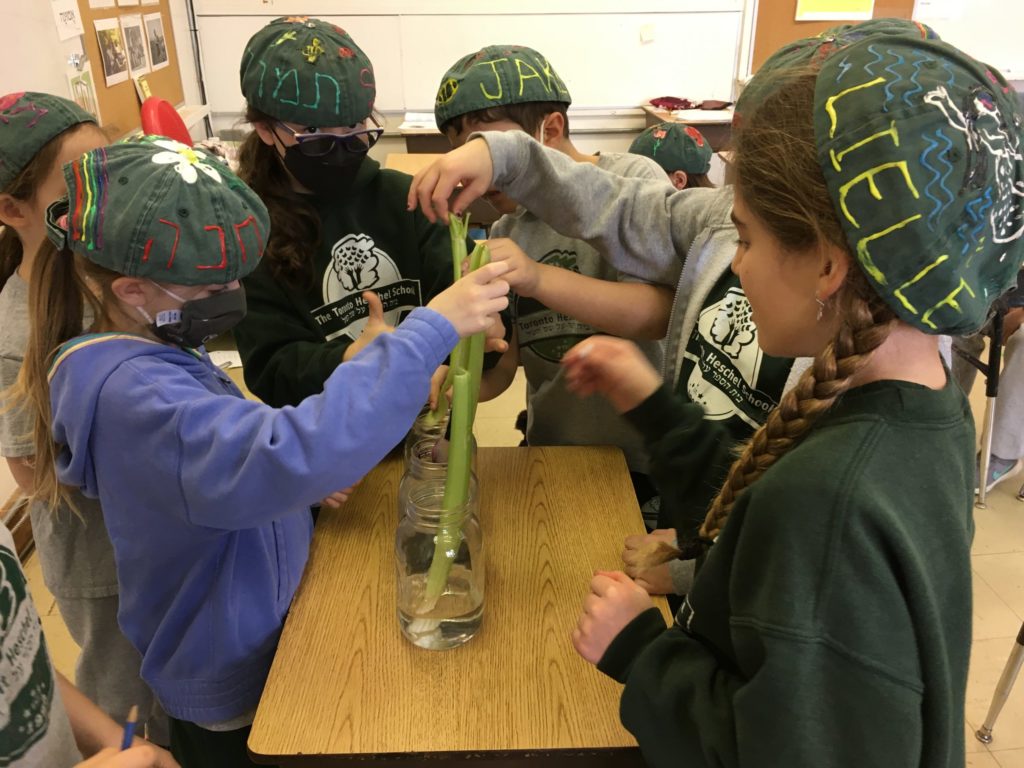
Students also create a vermi (worm compost) in the classroom to learn how the Chalutzim may have taken poor soil in Israel and developed it into rich soil by feeding the worms organic matter. Students get to experience this firsthand and add organic waste from their snacks to the compost each week, adding both an environmental and exciting layer to the learning.
In Ivrit, students begin the unit by learning new Hebrew vocabulary related to Chalutzim, such as Avdu et Ha’adama (worked the land), or Hayu Be’ayot (problems), and most importantly Lo Vitru (didn’t give up).
They also analyze black-and-white photographs of young Chalutzim in shorts, draining swamps, planting orange trees, and dancing the hora after a hard day’s work in the fields; students use their new vocabulary to describe what they see in the images.
Students also experience several guided visualizations which help them develop empathy for the plight of the Chalutzim; they imagine themselves arriving in Israel and getting ready for their first Passover in this new land.
In Chumash, students are now well-versed in learning “chaveruta style,” working to decode and dissect Torah text with a “chaver” or peer. By learning this way, students develop critical thinking skills as they must employ their new vocabulary words in order to read and paraphrase each pasuk to their partner b’Ivrit. They also develop social and emotional skills such as self regulation, patience, and perspective taking, as they must actively listen to their partners’ explanations of the text. These same qualities were crucial for the success story of the Chalutzim.
As we learn in class, while the Chalutzim faced many obstacles and wanted to give up at many points along the way, hem lo vitru—they didn’t give up!
About This Column
“Through the Classroom Window” is an opportunity for teachers to share the inspiring learning that takes place in their classrooms, giving others a glimpse into the heartbeat of the school.
Browse Column Archive
